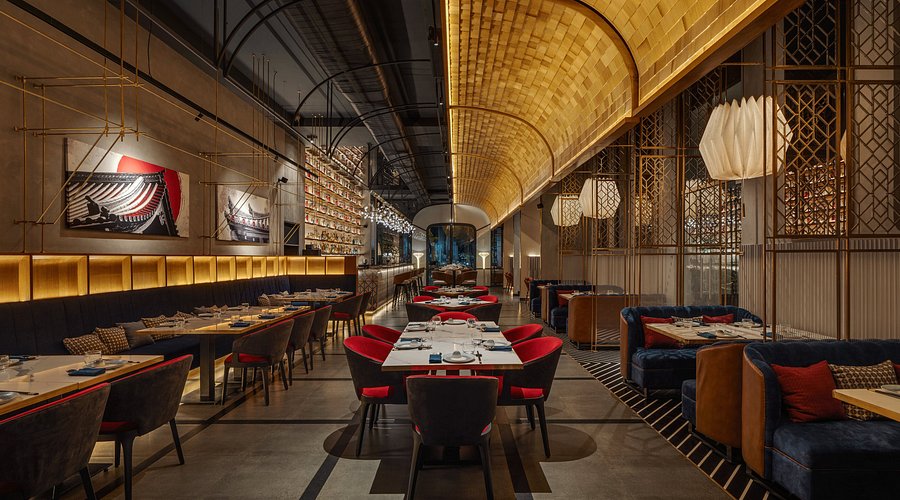Share This Article
The way light shines on a space determines how it looks and feels. Layered lighting is a revolutionary idea in contemporary interior design that has the power to transform static rooms into lively, welcoming havens. There are many techniques to apply layered lighting cohesively, extending beyond the visual appearance. However, how can you become an expert at layered lighting as an architect when designing spaces, and what does the term actually mean? It is time to jump right in.

What is Layered Lighting?
One way to give a space more dimension, texture, and atmosphere is via layered lighting, which means using a combination of multiple kinds of lighting with various techniques. Numerous levels of lighting—ambient, task, accent, and decorative are used in layered lighting systems rather than a single overhead fixture for the room or space.
- Ambient Light: The general illumination comes from ambient lighting, which can be described as lights set up on the ceiling or walls that light up the whole room. You can easily see where you’re going when you rely on it. It provides enough light to make a room comfortable and safe to walk around in.
- Task lighting: task lights can be provided by table lamps, under-cabinet lights, or pendant lights and are designed to illuminate specific tasks such as reading, cooking, or working.
- Accent Light: By illuminating architectural details, artwork, or ornamental objects, accent lighting creates a dramatic and visually appealing effect. As a designer, you determine what needs to be shown.
- Decorative Light: when the shape of the light fixture is decorative or sculptural. Consider an ornamental chandelier, candles, and fireplaces as examples. The main aim is to be an attractive light form, but it can also have a secondary use.
All day and night long, the combination of these layers produces a well-balanced and adaptable lighting design that serves to elevate both function and mood.


Why is Layered Lighting Important?
A room can feel antiseptic and lifeless when there is only one light source. You may see it in a room with one central pendant or one wall light. Adding depth and warmth, layered lighting may completely alter the visual impact of a space and your feelings towards it as well. If you prefer an intense light for working or a dim one for relaxing, you can change the settings to suit your needs. You can use this strategy to change the mood of the room, bring light into hidden areas, and highlight valuables like artwork or antiquities. Moreover, it looks better; rooms with layered lighting give off an air of care and warmth. Furthermore, you need to keep in mind that a feature looks different depending on the light’s intensity and direction.

Step-by-Step Guide to Layered Lighting in Interiors
As a designer who wants to design the lighting in a space and wants to create layered lighting as a pro, you can do the following as your main guide:
- Begin with ambient light
Select lighting fixtures that spread uniform, all-around illumination for the desired space, either a small room or an open plan. Your initial layer can be a chandelier, recessed lighting, or ceiling-mounted lights.
- Integrate task lighting
Assess which spaces, like home offices, reading nooks, or kitchen counters, require concentrated light. You need to identify the primary functions with their purposes. Pendant lights, under-cabinet lights, or adjustable lamps suit nicely here.
- Incorporate Accent Lighting
For highlighting artwork, architectural elements, or plants, use LED strips, wall sconces, or spotlights. This gives them attention and depth. The environment will appear with a sense of coherence and drama.
- Combine Fixtures to Create Visual Diversities
Mix and match various styles, such as pendants, sconces, table lamps, and floor lights, to create layers that double as ornamental accents. These layers create a decoration for the space in one way or another.
- Dimming and Control
You can easily change the atmosphere of a room by installing dimmers or smart lighting controls. They would be an excellent investment to change the mood easily.
Follow the 5-7 lighting rule. To avoid cramping the room while yet getting enough light, aim for five or seven light sources per room. This will give flexibility.
Also Read – How to Choose an Architect for your Project: A Practical Guide with 7 Must-Ask Questions


Advantages Over and Above Beauty
Layered lighting is more than just aesthetics. When task lighting is appropriately controlled, it can enhance productivity and lessen eyestrain, which can improve your health. It creates the ideal atmosphere for entertaining or resting, making your house cozier and more useful. There are many functions, including residential, commercial, and medical, where layered lighting plays a significant role in design and performance beyond the aesthetic.

Conclusion
Bringing your interiors to life is as simple as learning how to use layered lighting. Subtly but effectively, it may transform any space by enhancing its aesthetic, practicality, and adaptability. One source of light is never enough, so keep that in mind the next time you design your lighting. Build it up, get the proportions correct, and see your room come to life. Utilize smart home lighting solutions, which provide easy control over several layers, if you are looking for a fast approach to plan your layered lighting.
No matter the time of day, from a bright morning to a cozy evening, you may adjust your atmosphere to suit your needs. Is it time to upgrade your home’s lighting? You will notice a change once you begin accumulation.

